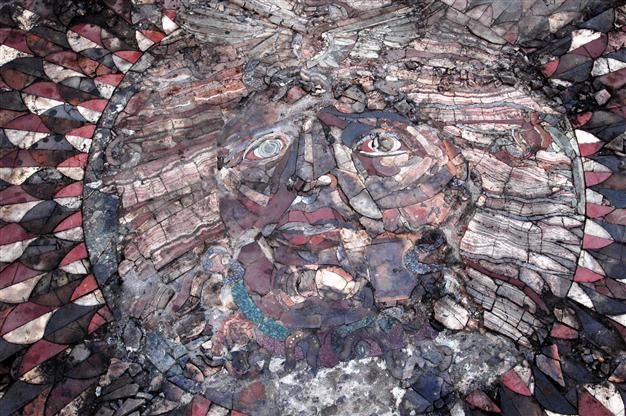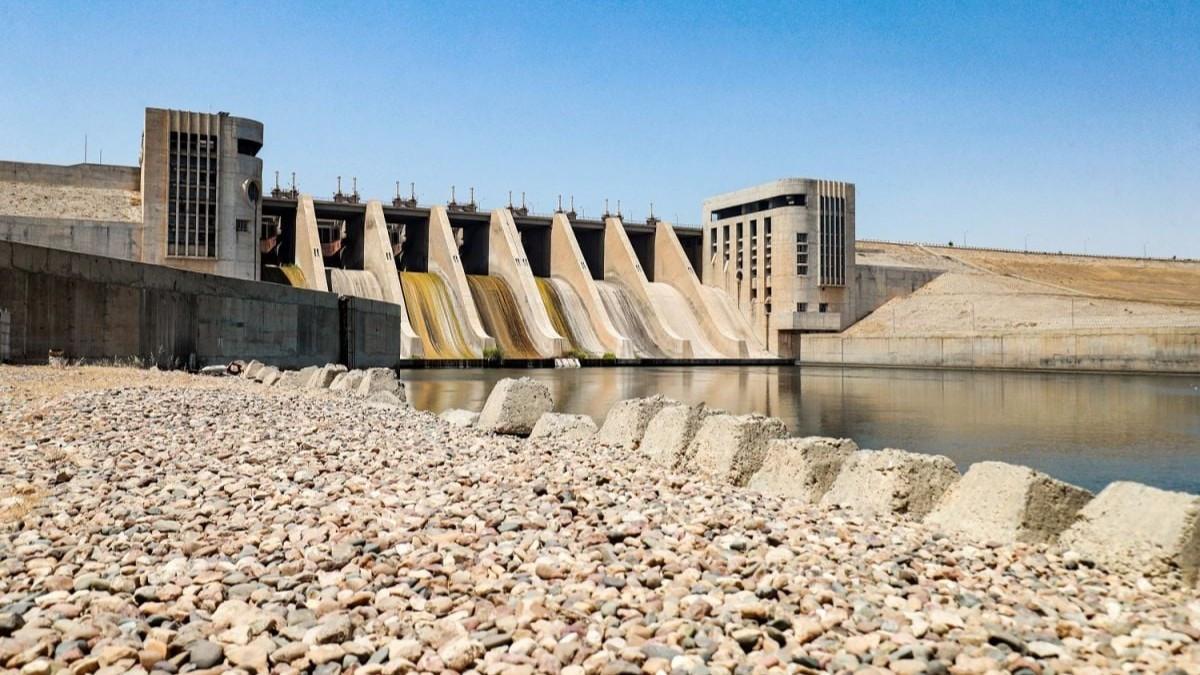Medusa mosaic ready to work spell once more
BURDUR - Anadolu Agency

About 95 percent of the medusa mosaic remains despite being around 1,800 years old. AA photo
The might no longer be able to turn people into stone, but a mosaic featuring the infamous Medusa will soon go on display after being discovered in southern Turkey.The mosaic was discovered in 2009 in the ancient city of Kibyra in the southern province of Burdur’s Gölhisar district during excavation work carried out by Mehmet Akif University. About 95 percent of the mosaic remains despite being around 1,800 years old.
“The mosaic is made up of thin, colored marble plaques. The technique used is called ‘Opus Sectile’ and there is no other Medusa in the world made with this technique,” said the head of excavations, Professor Şükrü Özüdoğru.
Archaeological excavations in Kibyra have been in progress since 2009, unearthing artifacts and relics of historical significance. Özüdoğru said the city, which was a regional power in the Hellenistic period, was founded in 330 B.C. He also stated that the stadium, concert hall, parliamentary building, bath and theater all possessed an impressive structural integrity that had allowed them to survive to the present day.
He said a 3,600-person-capacity Odeon structure unearthed in the ancient city was the only structure in the city covered with a roof, hence its functional capacity as a theater, court and parliamentary building in winter months.
Özüdoğru said the Medusa was 11 meters in length, adding that they had opened the Medusa for checks for the first time.
“In accordance with the reports of expert restorers, we closed the outer surface of the Medusa with five different layers. This year, we opened it so that it could be checked, and so that our restorers could carry out feasibility works on it.”
He said the restorers had presented him with a report about the restoration and conservation of the Medusa. “Next year, we will restore the Medusa. After the restoration, the Medusa will be covered with glass and opened to visitors.”
Özüdoğru said they had found another mosaic beneath the Odeon during excavations in 2011 and that the latter mosaic had been made with panels with 15 different geometric designs in white and gray colors.
Özüdoğru said the Odeon at Kibyra was similar to the Herodes Atticus Odeon in Athens, adding that structures found there were also important to world archaeology.
Medusa in Greek mythology
In Greek mythology, Medusa was a monster, generally described as having the face of a hideous human female with live venomous snakes in place of hair. Gazing directly upon her would turn onlookers to stone. Most sources describe her as the daughter of Phorcys and Ceto. Medusa was beheaded by the hero Perseus, who used her head as a weapon until he gave it to the goddess Athena to place on her shield. In classical antiquity, the image of the head of Medusa appeared in the device that fends off evil known as the Gorgoneion.
















